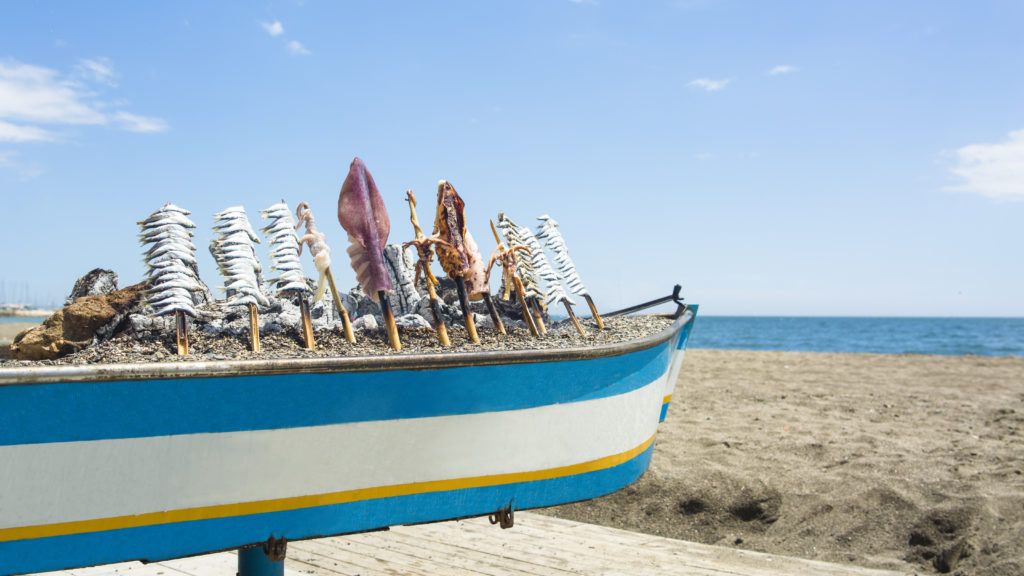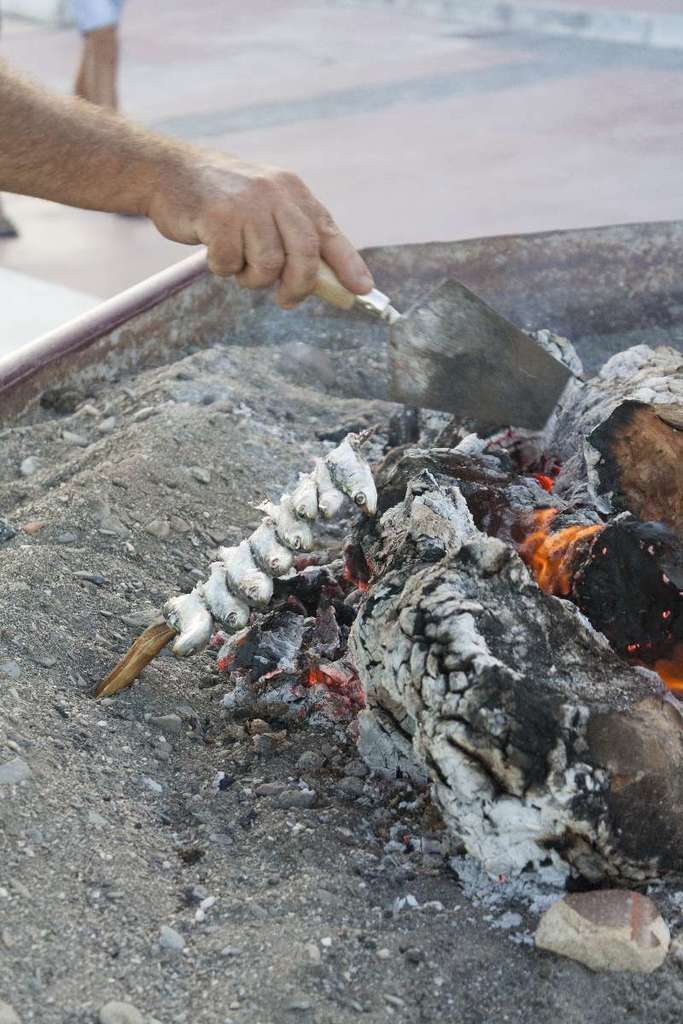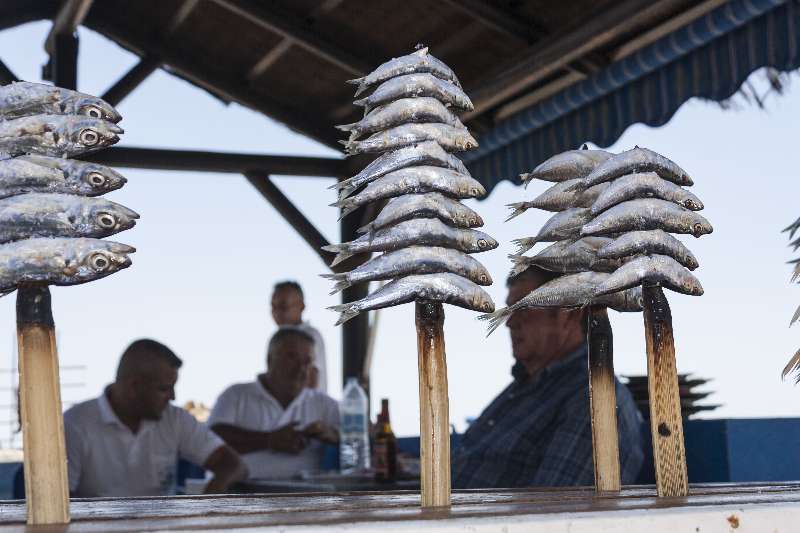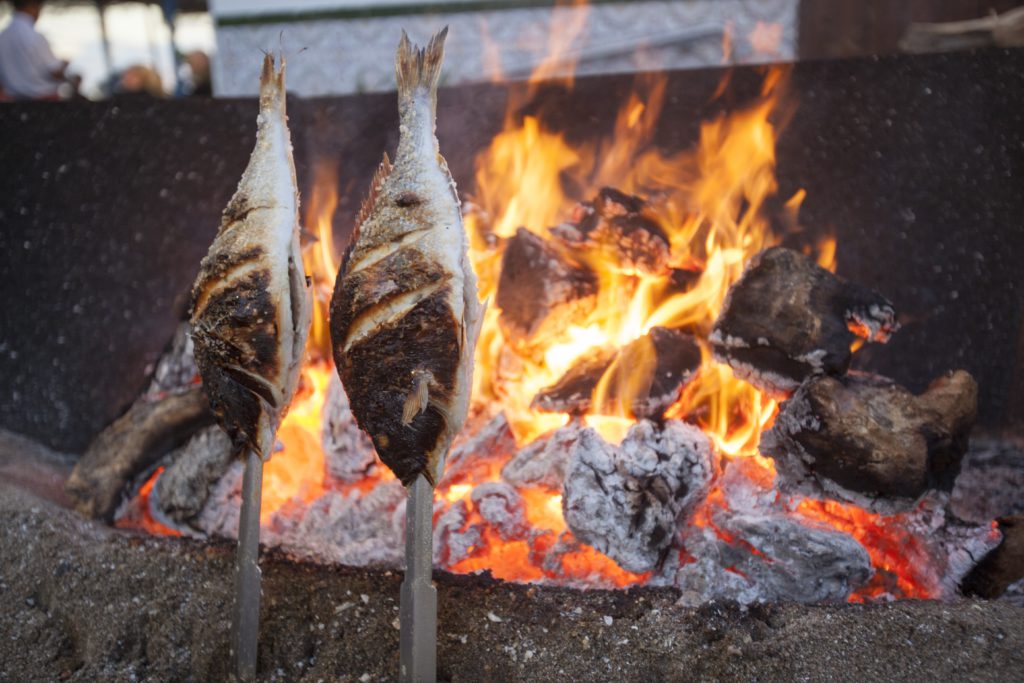Espetos (Sardine brochettes)
The espeto is a fundamental and characteristic dish of Malaga’s cuisine, which consists of skewering sardines on long, thin rods and roasting them using firewood on the sand of the beach. In Malaga, the practice of roasting sardines skewered in the open air and under the open sky is called moraga. The rods are stuck into a sandy bed in such a way that the fish receives the heat from the embers but not the smoke, and so that the rods do not get burned when the fire is rekindled. A moraga can be held as a family celebration or among friends, which is very common, especially on summer nights.
The moragas are practiced all along the coast of Malaga, from the western Costa del Sol to the beaches of Levante or the Axarquia area, including the capital city. In recent years, moragas have become a tourist attraction in the numerous chiringuitos (beach bars) along the coast of Malaga, being one of the most popular dishes and most demanded by visitors. The moragaor is the person who cooks the espeto and his job involves harvesting the reeds and the work required to prepare them as espetos, roasting the sardines, lighting and preparing the embers and the espetado (cooking of the espeto). The whole of the work carried out by the moragaor is called moragar.
Historical notes
The espeto has been the maritime way of making the most of the fish leftovers from the sale or the pieces that were not suitable for sale (horse mackerel, bream, seabream, mackerel, etc.), using a material at hand, the reeds collected in one of the many reedbeds along the coast of Malaga, making of the instrument, the espeto reed, a sign of Malaga’s identity.
It is believed that the first espetos de sardinas (sardine brochettes) were known by the general public in the Malaga district of El Palo by the end of the 19th century, although moragas already appeared in a lithograph dated between 1850 and 1852. This district was, at that time, a fishing village in full development, mainly due to the arrival of the train and tram to the area, which encouraged many local people to travel to the beaches to spend a leisure day.
In El Palo neighbourhood, the job of moragaor has always been considered an art. The people who work as moragaor have always been and still are exclusively male. The reasons could be found in the fact that, in its origins, it was the preparation of a meal linked to a specific work context, in which the protagonists were men, and it was men who, after separating the part of the day’s catch not suitable for sale due to its low market value, roasted and consumed it on the beach. The former seafarers and fishermen started to exert this practice, once this custom became a trade.
Within the province of Malaga, the profession of moragaor is practiced in the western Costa del Sol during the spring and summer months, approximately from the month of May to the month of October. However, in the area to the east of the capital, moragas are present throughout the year.
It is well extended in municipalities such as Benalmádena, Fuengirola, Málaga, Rincón de la Victoria, Torremolinos or Vélez-Málaga.

Espetos. Playa del Dedo. Turismo y Deporte de Andalucía. www.andalucia.org

Espetos de sardinas. Photo: Eva Cote Montes. © Instituto Andaluz del Patrimonio Histórico
IAPH image under the conditions established under license cc-by 3.0 de Creative Common. https://creativecommons.org/licenses/by/3.0/es/

Espetos de sardinas. Photo: Eva Cote Montes. © Instituto Andaluz del Patrimonio Histórico
IAPH image under the conditions established under license cc-by 3.0 de Creative Common. https://creativecommons.org/licenses/by/3.0/es/

Mijas. Espetos. Turismo y Deporte de Andalucía. www.andalucia.org

